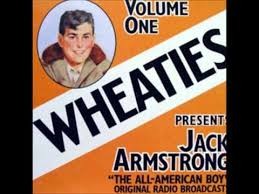The unforgettable jingles
 A jingle is a short tune used in advertising; it contains one or more hooks (it’s a musical idea which often is a short riff, passage or phrase) which helps promote explicitly of a product or service. Jingles are hummable, catchy little slogans. They are typically a form of sound branding. Because we can hum them, they are phrased with catchy words which can be remembered easily. Jingles live a longer life. Though they seem trifling, they are successful at getting us to remember a product, to buy the product and even make us think we need the product to be accepted or successful.
A jingle is a short tune used in advertising; it contains one or more hooks (it’s a musical idea which often is a short riff, passage or phrase) which helps promote explicitly of a product or service. Jingles are hummable, catchy little slogans. They are typically a form of sound branding. Because we can hum them, they are phrased with catchy words which can be remembered easily. Jingles live a longer life. Though they seem trifling, they are successful at getting us to remember a product, to buy the product and even make us think we need the product to be accepted or successful.
The first jingle was born in 1926 in Minneapolis, Minn. when an a cappella group played a quartet in praise of “Wheaties” – a General Mills breakfast cereal. Executives at General Mills were actually about to withdraw Wheaties from the market, but when they noticed a point in its popularity in the regions where the jingle was aired, they changed their minds. The company decided to air the jingle nationally on the radio, and sales went through the roof. Eighty years later, Wheaties is still a household staple in kitchens across the globe.
Since then, jingles have become an important part of any advertising campaign. Some jingles will never die, and they have become a part of our lives. Effective jingles have the capacity to build tremendous brand equity of a product. A successful jingle promotes a positive image, making the consumer more likely to want to purchase the product.
Music can fulfill several tasks when it is used in advertisements. The appealing and entertaining aspect of music helps making an advertisement more interesting. Captivating jingles can make the commercials attractive and engage attention of viewers. From this point of view music need not necessarily manifest any special affinity with a particular product or service in order to play an effective and useful function. The music functions more as bridge between viewer and advertisement. Another basic attribute of music is to support an advertisements structure and continuity. Music adds dramatic approach to a TV or radio commercial. The narrative of the commercial becomes more meaningful with the music. Jingles are also called ‘Singing commercials’ and they have made a self-contained genre.
Look at the lingering jingle of Nirma washing powder; it is one of the most famous jingles. It’s been years down the line but the jingle of Nirma is still jingling in the ears of Indian People. It was of no importance whether the detergent gave clothes the “Dhood si Safedi” or not. But the feisty and spirited ad made a marvel out of the brand. Think of Nirma and the picture of a little girl twirling around with her white frock cannot be forgotten. This jingle has become so familiar in our minds. Nirma took on the might of giant multinationals and wrote a new chapter in the Indian corporate history!
Jingles have the poetic and emotional appeal; it scores over logical, informational advertisements. I think this happens because music can provide a message without the customer consciously noticing it. For providing rational facts in the same time “mixtures of speech and song provide advertisers with opportunities for both logical and factual appeals. Music can therefore function as a nonverbal identifier for certain groups with different musical taste.
 Do you know that in sixties and seventies companies wishing to advertise on Radio used external radio stations like Radio Ceylon and Radio Goa (then Goa was under Portuguese control). Radio Ceylon was a popular station as it aired film songs, which was banned on All India Radio (AIR) because the then Information & Broadcasting Minister Mr. Balkrishna Vishwanath Keskar – who thoroughly disapproved of film music. However, in 1965 when Ms. Indira Gandhi was Information & Broadcasting Minister under the Prime Minister Mr. Lal Bahadur Shastri, she changed things. In 1966, Ms. Indira Gandhi became the Prime Minister and she gave serious attention to the use of Radio as a mass media. In 1967, the government accepted the recommendations of an expert committee under the former Director of AIR – Krishna Chandra Sharma. And ads started broadcasting on radio which further saw a spurt in sweet and melodious radio jingles.
Do you know that in sixties and seventies companies wishing to advertise on Radio used external radio stations like Radio Ceylon and Radio Goa (then Goa was under Portuguese control). Radio Ceylon was a popular station as it aired film songs, which was banned on All India Radio (AIR) because the then Information & Broadcasting Minister Mr. Balkrishna Vishwanath Keskar – who thoroughly disapproved of film music. However, in 1965 when Ms. Indira Gandhi was Information & Broadcasting Minister under the Prime Minister Mr. Lal Bahadur Shastri, she changed things. In 1966, Ms. Indira Gandhi became the Prime Minister and she gave serious attention to the use of Radio as a mass media. In 1967, the government accepted the recommendations of an expert committee under the former Director of AIR – Krishna Chandra Sharma. And ads started broadcasting on radio which further saw a spurt in sweet and melodious radio jingles.
Even today the jingle “tandurasti ki raksha karta hai Lifebuoy, lifebuoy hai jahan tandurusti hai wahan” rings in our ears. Similarly ‘Utterly, Butterly, Delicious AMUL’ was another great success.
In the seventies India witnessed a lot of new agencies being set up, including the Mumbai-based Rediffusion, Trikaya Grey and Chaitra and the Chennai-based R. K. Swamy & Associates. Reliance Group setup Mudra Communications in Ahmedabad. In 1977, Doordarshan started accepting ads. It changed the life of Indian ads radically and brought a qualitative leap in making of ads. I still remember the first TV ad was a still for the Topaz brand of razor blades from the house of Malhotras and the first ad prepared for TV was of Jenson & Nicholson modeled by Dalip Tahil and Maya Alagh arguing over the color of their bedroom. This ad was created by Rediffusion. There were only 3 TV Programs on Doordarshan. I still recall we never got irritated when in between the programs ads were played. The programs were: CHITRAHAAR, PHOOL KHILE HAIN GULSHAN, GULSHAN and Sunday Evening Feature Film. And, due to TV ads, lesser known brands were marketed with ease all over the nation.
And then in early eighties the Hawkins Pressure Cooker jingle sung by Preeti Sagar (My heart is beating, Film Julie singer) the jingle words were “Hawkins ki seeti baji, khushboo hi khushboo udi, Mazedaar, lazzedaar khaana hai tayyar, aji khaana hai tayyar! Murg Musallam, Tomayyto Soup, Matar Pulao, Maaki Daal, Kheer aur Dum Aloooooo Har vyanjan swadisht banaaye, minton mein jhatpat pakaaye Hawkins! Hawkins! Hawkins Pressure Cooker! Every Indian household thought of buying the Hawkins Pressure Cooker.
Alyque Padamsee of Lintas was approached by Lever Brothers to write an ad film for HAMAM. He drafted script showing a bikini model bathing with HAMAM under a waterfall. This idea was absolutely rejected by Lever Brothers considering that Indian housewives are restricted to kitchen, and they rarely go out for a picnic or a movie. Padamsee then made a simple ad “chehre ki sundertaa ko nikharta HAMAM”. See how ads show the transformation in society, its culture and philosophy – time passed and Lever team once again told Alyque Padamsee to write another ad film for a new soap – LIRIL. Alyque took out the old and rejected script from his cupboard, changed the title from HAMAM to LIRIL and rest is the history. Within 10 years the Indian housewife was elated from her mundane surroundings to a more confident and earning woman. The Liril ad showcased the modern and liberated Indian woman to the world. It was the hottest ad in the early 80s. Which showed the LIRIL girl drenched under the falls wearing only bikini? The ad was all about waterfalls, abundant water and the girl splashing about. The background score was “la…la la la laaa..”. The la,la, la notation just went about with a hummable tune. The first Liril ad was a masterpiece of with unmatched caliber; it was a product of Alyque Padamsee’s imagination. It was shot in Kodaikanal at a waterfall a little beyond Guna caves. LIRIL brand became largest selling brand of soap in Luxury Soap Segment. Both men and women used it!
I recall this sweet little jingle of Bajaj Electricals. It seems Bajaj Electricals made a historical success by giving a fight to Philips bulbs with their jingle “Jab mein chhota baccha tha, badi shararat karta tha, meri chori pakdi jaati,…aur roshnee karta Bajaj” the attractiveness of this jingle is haunting. The ad shows a kid hiding and reading comics, then a young man sneaking in room from window and at the last shot of an old man sneaking into the fridge for some sweet. The changeover in pitch and tone from a childish jangle to the old man’s rattle is so fascinating in this jingle.
Some of the older jingles can still bring a smile on our faces. They are inseparable from our lives. They have become iconic and like diamonds they will remain with us forever.
















































